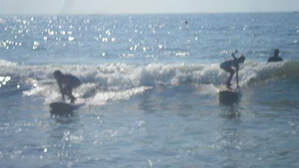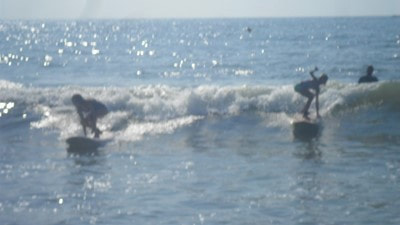|
I love photos and their ability to capture a moment in time. Since we are bound by the laws of the space-time matrix, we are unable to go back, to review the day, and see a play by play. Unless we have a reality TV show, our lives are not videotaped for us to rewind and watch. Instead we have pictures, that help tell our story, present the environment, gather emotion, and capture that exact moment that is so unique, nothing will ever be exactly that same way again. I do think, however, that we take the power photos give us for granted. Studies show that what we remember about our past really is only 37% true — the rest is made up. Its only how we perceived all the associated sensory information is what is true. This is done in order to understand it. On average, we humans are bombarded by 1,600 commercial messages a day, 80 we consciously notice, and only 12 provoke a positive or negative response. We filter stimuli around us to not induce overload in our brains. We never evolved to handle information at the capacity we experience it today… or at least not yet. This is called selective attention. What we hear, we process against our belief systems, which is called selective distortion. This is because as humans we have an urge to explain things, it’s a part of our physiology of our brain — this is how Greek mythology was born. We distort in order to understand. And because of selective retention, only a small fraction of any of the stimuli we process is actually retained. It is due to this selectiveness that perceiving is just as powerful as awareness. I call this percivision: the act of perceiving and gaining understanding into the nature of reality. To make matters even more complicated, other studies have shown that we alter our memories, every time we recall them. In fact, our memory is an elaborate party of protein, enzymes, electrical and chemical signals between neurons in the brain. This scaffolding can be interfered with other processes going on in our brain, such as emotional and physical reactions to the world around us. Thus, making it possible to alter these paths, depending on what’s going on with us when it’s recalled. MRI scans done in these studies have determined that both the amygdala and hippocampus work together to create our false memories. The hippocampus is related to long-term memory formation whereas the amygdala deals with emotions and social situations. Memories of our reality can then be altered based on where are, who we are with, and how we are feeling at the time of recollection. Therefore, when we think about what our 5th grade teacher was like, or how our first date really went, what we recall may be incorrect. Almost makes reality a word that has no meaning, since it is possible we are unable to physiologically recall it 100%. This is one of many reasons why I am fan of pictures. Looking back at a snapshot of our lives, is the closest thing we have to reality, if it does exist.  In this photo, my niece and brother are surfing. I remember that I sat out and left my husband and daughter with them, since I kept wiping out. I simply just could not get on that board and surf. Or, maybe I saw a shark and got scared? Or, maybe I never got in the water and met up with them later? Who knows that my reality was that day. What this picture does prove about reality is that my brother and niece were surfing and they both were able to get on the boards! There is no evidence that I was able to.
0 Comments
|
Kat LahrChoose to live a consciously evolved life. Archives
April 2022
Categories |
|
© 2024 Inner AlcheME
|



 RSS Feed
RSS Feed